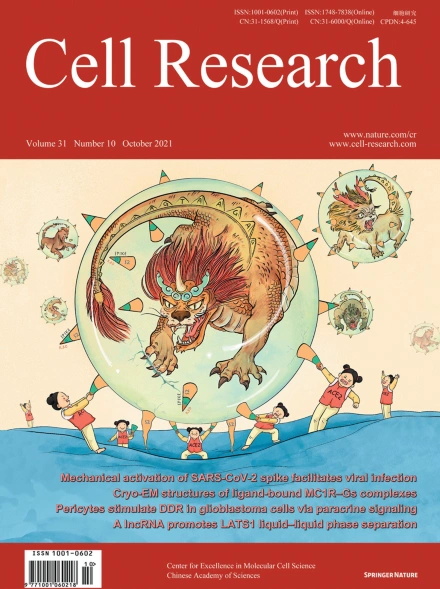
Advanced Search
Submit Manuscript
Advanced Search
Submit Manuscript
Volume 31, No 10, Oct 2021
ISSN: 1001-0602
EISSN: 1748-7838 2018
impact factor 17.848*
(Clarivate Analytics, 2019)
Volume 31 Issue 10, October 2021: 1130-1133 |
Structures of SARS-CoV-2 B.1.351 neutralizing antibodies provide insights into cocktail design against concerning variants
Shuo Du1,2,† , Pulan Liu1,2,† , Zhiying Zhang1,2,† , Tianhe Xiao2,3,4 , Ayijiang Yasimayi2,3,4 , Weijin Huang5 , Youchun Wang5 , Yunlong Cao3,4,* , Xiaoliang Sunney Xie2,3,4,6 , Junyu Xiao1,2,3,6,*
1State Key Laboratory of Protein and Plant Gene Research, Peking University, Beijing, ChinaDear Editor,
The spread of the SARS-CoV-2 variants, especially the global variants of concern (VOCs), could seriously dampen our efforts to tackle the COVID-19 pandemic. The SARS-CoV-2 spike protein recognizes the host angiotensin-converting enzyme 2 (ACE2) via its receptor-binding domain (RBD) to mediate viral entry into the cells. Several notorious mutations have been identified in the spike RBD of the VOCs. For example, B.1.1.7 (Alpha), B.1.351 (Beta), and P.1 (Gamma) all contain the N501Y mutation, which increases the binding affinity for human ACE2 and confers higher infectivity in mice.1,2 In addition, B.1.351 and P.1 carry the K417N/E484K and K417T/E484K substitutions, respectively, which drastically alter RBD surface electrostatics and lead to immune escapes.3,4 E484K has been detected in some strains of B.1.1.7 as well. Recently, the World Health Organization classified B.1.617.2 (Delta) as the fourth global VOC, which contains the L452R and T478K double mutations in the RBD. The L452R substitution has been shown to resist some neutralizing antibodies,5,6 and is present in other SARS-CoV-2 variants besides B.1.617.2, such as B.1.617.1 (Kappa) and B.1.427/B.1.429 (Epsilon). A L452Q mutation is found in C.37 (Lambda). The functional significance of T478K remains to be understood. As this substitution also leads to an alteration in the electrostatic property of RBD, it may function as an escaping mutation to diminish the potency of some neutralizing antibodies as well.
https://doi.org/10.1038/s41422-021-00555-0